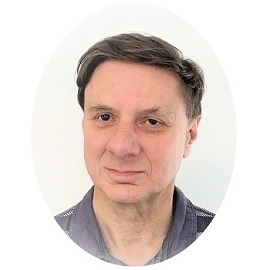- ニュース
- 特別講義「ランダム媒質中の確率過程」開催
特別講義「ランダム媒質中の確率過程」開催

Dates
カレンダーに追加1010
MON 20221017
MON 2022- Place
- 早稲田大学西早稲田キャンパス 63号館2階05会議室 /オンライン(Zoom)
- Time
- 14:30 - 18:30
- Posted
- 2022年7月27日(水)
数物系科学拠点では、2022年10月10日(月)と17日(月)に、国際教育活動の一環として標記特別講義を開催します。Martin T. Barlow先生と福島竜輝先生を講演者にお迎えし、数理物理学に動機付けを持つランダム媒質中の確率過程について、基礎的な部分から最新の研究成果に至るまでご講演いただく予定です。
講義タイトル
『ランダム媒質中の確率過程(Stochastic Processes in Random media)』 特別講義
日程
2022年10月10日(月)
- 14:30-16:10 福島竜輝(筑波大学 数理物質系 准教授)
- 16:30-18:30 Martin T. Barlow(University of British Columbia: Emeritus Professor)
2022年10月17日(月)
- 14:30-16:10 福島竜輝(筑波大学 数理物質系 准教授)
- 16:30-18:30 Martin T. Barlow(University of British Columbia: Emeritus Professor)
講師
 |
Martin T. Barlow先生University of British Columbia: Emeritus Professor 講演タイトル:Harnack inequalities: from PDE to graphs, fractals and metric spaces |
 |
福島竜輝先生筑波大学 数理物質系 准教授 講演タイトル:Probabilistic aspects of the Anderson model |
会場
早稲田大学西早稲田キャンパス 63号館2階05会議室/Zoomによるハイブリッド開催予定
言語
英語
対象
研究者、学生
事前登録
事前登録が必要です。参加を希望される方は、こちらから参加登録をお願いします。
お問合せ
【講義内容等に関するお問合わせ】
早稲田大学基幹理工学部数学科 熊谷隆 教授 t-kumagai[at]waseda.jp
【参加登録等に関するお問合せ】
SGU数物系科学拠点 info [at] sgu-mathphys.sci.waseda.ac.jp
タイムテーブル ※質疑応答時間を含む
10月10日(月)
14:30 – 16:10 |
福島竜輝 准教授(筑波大学 数理物質系)
|
| (講義概要) The Anderson Hamiltonian is a Schroedinger operator with random potential. The random potential is usually assumed to be stationary and ergodic, which roughly means that it is macroscopically homogeneous. However, its spectral properties exhibit striking differences to the case of periodic potentials: there are dense pure point spectrum with localized eigenfunctions around the ground state energy. In the first half of this lecture, I will quickly review some of the results in this direction. In the second half, I will focus on a part of the proof where a probabilistic method called “large deviation principle” plays an important role. There we also encounter a seemingly unrelated polymer model which is of interest itself. |
|
16:30 – 18:30 |
Martin T. Barlow 教授(University of British Columbia)
|
| (講義概要) A major problem in PDE, solved independently in the late 1950s by de Giorgi, Moser and Nash, was the regularity of solutions to second order divergence form equations. Moser’s approach was to prove a Harnack inequality, which can be understood in probabilistic terms. The Harnack inequalities (elliptic and parabolic) of Moser are versatile and powerful tools: for example they imply immediately the Liouville property — ie that all bounded harmonic functions are constant. The proof techniques of de Giorgi, Moser and Nash are also very robust, and can be adapted to graphs and general metric spaces. These lectures will focus on the stability of these Harnack inequalities under perturbations of the space, such as by rough isometries. |
10月17日(月)
14:30 – 16:10 |
福島竜輝 准教授(筑波大学 数理物質系)
|
| (講義概要) The Anderson Hamiltonian was introduced to describe the motion of an electron in a disordered material, but it can also be used to describe the behavior of the heat with random sources and sinks by considering the corresponding parabolic problem. This direction has also been studied actively since 1990 and rather complete results have been proved for various models. In the first half of this lecture, I will mainly discuss the case of unbounded potentials, where the so-called the extreme value theory plays an important role. In the second half, I will explain more recent advances in the case of bounded potentials. |
|
16:30 – 18:30 |
Martin T. Barlow 教授(University of British Columbia)
|
| (講義概要) A major problem in PDE, solved independently in the late 1950s by de Giorgi, Moser and Nash, was the regularity of solutions to second order divergence form equations. Moser’s approach was to prove a Harnack inequality, which can be understood in probabilistic terms. The Harnack inequalities (elliptic and parabolic) of Moser are versatile and powerful tools: for example they imply immediately the Liouville property — ie that all bounded harmonic functions are constant. The proof techniques of de Giorgi, Moser and Nash are also very robust, and can be adapted to graphs and general metric spaces. These lectures will focus on the stability of these Harnack inequalities under perturbations of the space, such as by rough isometries. |
- Links
- 数物系科学拠点
